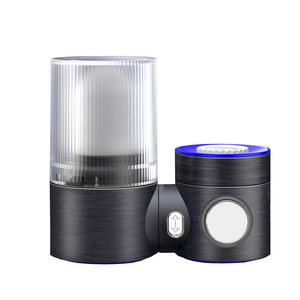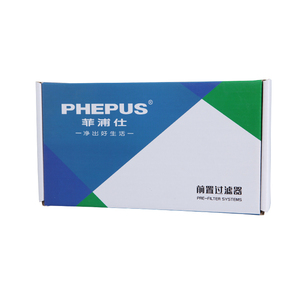(4392 products available)
















































































































































 Ready to Ship
Ready to Ship







































































The pipeline water filter removes impurities from drinking water. These filters use various physical, chemical, and biological techniques to reduce contaminants. There are different types of pipeline water filters, and they all work on the same basic principle: improving water quality for health and environmental sustainability. Every type of water filter has unique filtering capabilities.
Filtration Method
Purification of pipeline filter systems takes place sequentially through numerous filter elements. Each filter element is engineered to expel specific impurities from the water. The process starts with a pre-filter cartridge that removes large particles like sediment, rust, and sand. Following that, carbon block filters eliminate chlorine and volatile organic compounds (VOCs), enhancing the taste and aroma of water. Ceramic filter candles also remove any remaining bacteria, cysts, and sediment from the water. Finally, an infrared mineral filter adds essential minerals to the purified water.
Fluoride Removal
Reverse osmosis pipeline water filters efficiently remove fluoride from water. Fluoride is a common concern among many individuals who wish for better dental hygiene in kids and adults. Using one of these filters ensures that families do not consume excessive fluoride levels which could potentially harm the kids.
Hydration Encouragement and Contaminant Removal
Installing pipeline filtration systems in homes or offices encourages regular water consumption. If individuals are unsure about the quality of water in their filters, they are more likely to reach for bottled water. On the other hand, filter systems provide easily accessibly clean water that is free of impurities.
These filter systems remove numerous harmful impurities from the water, including heavy metals like lead and mercury, poisonous compounds like arsenic and cyanic acid, and pesticides and herbicides. All these qualities make filter devices an excellent choice for safe and healthy drinking.
Choosing the right pipeline water filter can be challenging since different properties need to be considered. Here are some tips to help buyers make an informed decision.
Volume and Flow Rate Capacity
This capacity refers to the amount of water the filter situation can handle. In many cases, the filter's capacity must be matched to the pipeline's capacity to ensure it works appropriately. Otherwise, the filter can get clogged frequently or fail to filter water as expected. Buyers can get a filter that meets their needs by determining the flow volume. This is typically measured in gallons per minute (GPM) or liters per second (LPS).
Water Contamination Levels
Understanding the water quality is of utmost importance. This is simply because a particular pipeline filter may be suitable for one supplier's water but not for another's. To determine what kind of filter will work best, buyers must first identify the source of their water supply. Next, they should have the water tested to check for any contaminants. Once the results are in, they can then discuss with the supplier options for various filters that will suit the water supply and its contaminants.
Maintenance and Replacement
Every water filter comes with its own maintenance and replacement needs. Be sure to check the manufacturer's instructions for information on how frequently filter cartridges should be changed and how to clean the system. Additionally, have a look at what is needed to keep the filter in great working condition. Put this all together to make an educated choice and choose a pipeline filter system that will align with the user's maintenance needs.
Certification Standards
Certification means that the product has been tested by a third party and meets specific standards. This gives any pipeline water filter credence and means it is reliable. When looking for a certified filter, buyers need to know which organization the certification is from. For example, filters with certifications from the National Sanitation Foundation (NSF) or the Water Quality Association (WQA) are great. They are known to follow specific standards set for water filtration systems and ensure the product meets quality and safety standards. Always ensure the certification is relevant to the needs or requirements. This way, buyers can be sure the filter will work as expected.
Targeted Contaminants
Next, buyers need to know the contaminants they want the filter to remove. Different filters are made to remove different contaminants, so checking the filter's specifications and certifications to ensure it can handle the issues in the water supply is essential. These include sediment, tastes and odors, bacteria, and heavy metal.
Q: How often do I need to replace the filters in a pipeline water filter system?
A: The frequency of filter replacement depends on the specific model and the water quality. It's essential to follow the manufacturer's guidelines for replacement intervals to ensure optimal performance.
Q: Can a pipeline water filter remove all types of contaminants?
A: While no filter can remove every single contaminant, pipeline water filters are designed to target specific impurities. It's crucial to choose a filter that addresses the contaminants present in the water supply.
Q: Can I install a pipeline water filter myself, or do I need a professional?
A: Some filters may be installed by homeowners with basic plumbing skills, while others may require professional installation. Always check the installation requirements for the chosen filter system.
Q: How much maintenance is required for a pipeline water filter?
A: Besides filter replacement, maintenance tasks may include cleaning the filter housing and checking for leaks. Refer to the manufacturer's instructions for maintenance requirements of the specific filter system.
Q: Can I use a pipeline water filter with hard water?
A: Yes, most filters can handle hard water. However, it's best to check with the manufacturer to make sure the filter is compatible with hard water and to learn about any special care it may need.